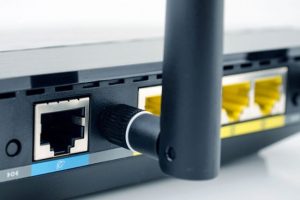If you live in an apartment complex you’ve probably noticed more than just the passive-aggressive network IDs that your neighbors use—very likely you’ve had problems with your wireless connections dropping out, or just not being as fast as you’d like. Here’s a quick fix.
Of course, this isn’t the only thing you need to do to make sure your wireless network is running at maximum speed, but for today’s lesson we’ll show you how to pick the right channel to make sure you can stream the new Futurama episode to your laptop without skipping.
Note: if your Wireless network is working fine, please don’t mess with it. Or at least, don’t blame us if you break it.
Figuring Out the Right Wi-Fi Channel
Your best bet for a free scanner utility is Nirsoft’s WifiInfoView, which doesn’t even require installation. Just unzip and run it, and check out all of the networks using each channel.
Note: in prior versions of this article we had recommended a different utility that isn’t free anymore, but we’ve updated the article.
As you can see in this screenshot, there are a lot of nearby networks using channels 6 and 1, so it would probably make sense to switch to a different channel, like maybe channel 3.
Note: If you have more than one network card enabled, make sure the drop-down has your wireless card selected.
Change Your Wireless Channel
If you’re using a Linksys router, you’ll need to browse to the address of your router, which is probably set to http://192.168.1.1 but could be assigned to another address. You can run a quick ipconfig command at the command prompt to check:
In my case the address is different (because I changed it, of course), but what you’re looking for is the Default Gateway for your Wireless connection, and then go to http://<Default Gateway> in your browser. Enter in the password that you hopefully remember, and head to the Wireless –> Basic Wireless Settings tab.
My router has two separate bands, but your router might just have a single band here. In my case, what I’ve done is set the 2.4 GHz band to only be used for Wireless-G, and the 5GHz one to Wireless-N only. Since I’m not having any problems with the Wireless-N settings, I’ve left those on auto.
Where I am having a problem, however, is my Wireless-G devices—so what I’ve done is chosen channel 9, since it’s the only channel that’s not being used by any of my neighbors, who are using mostly channels 1 and 6, though a few are using 11 as well.
Channels 1, 6, and 11 are the most common channels to choose, and most routers will use one of them as the default channel—but the general idea is to be as far away from everybody else as you can.
Note: I’ve also configured my router for 20 MHz only on the 2.4 GHz Wireless-G band, just because that was the only way it would let me choose the standard channel manually.
If you are using a different router, the IP address will generally be the same, but you’ll have to figure out how to change the Wireless channel without any screenshot tours. It’s usually fairly easy, though, once you know what you’re looking for.
Fun Technical notes
If you look closely, you’ll notice that each of the channels are 5 MHz away from each other, but the Channel Width for 2.4 GHz is actually 20 MHz. What this means is while that the channel might be set to channel 6, it’s also partially using 5 and 7, and probably slightly interfering with 4 and 8.
http://routerpicker.com/best-wireless-routers-for-best-range/

Hi! I am Martha D. I have over 20 years of experience in troubleshooting technical problems. I created Technipages so I could share my adventures in troubleshooting, and
I hope readers find the solutions posted on this site as useful as I do








